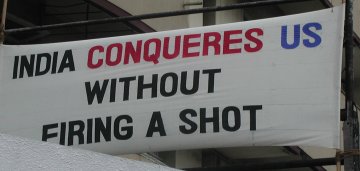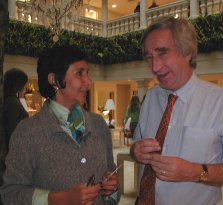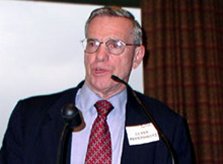

House of Sound
BRICS Programme One




House of Sound
BRICS: The Rise of Brazil, Russia, India and China
Programme One: Turning Tables
Globalization may have its discontents. But the fact is that falling trade barriers have helped raise some 200 million people out of poverty in the past decade alone. The rich have been getting richer -- but in many places on the planet, the poor are getting less poor.
That process is redrawing the economic map of the world A few years ago, sensing that some kind of tectonic shift was underway, Goldman Sachs' chief global economist, Jim O'Neill, asked his analysts to create and run a series of projections based on everything that is now known about how economies and societies develop, to try to see what the world would look like in 2050.
The results surprised them, and him:
If their projections are at all on target, by the year 2050, not only will the USA no longer be the world's biggest economy... but, of the current top six (the G-6), only the US and Japan will still be in the G-6. The projections indicated that Brazil, Russia, India and China (the BRICs) are the future global economic powers.
However, partly because India and China in particular have such big populations, all that new wealth is going to be spread rather thinly among the countries' citizens. Thus, by the year 2050, the world's BIGGEST economies (by GDP) will not be the world's RICHEST economies (per capita GDP): although the average Chinese person will be wealthier than his parents and grandparents, he still won't be as well-off as, say, the average Swiss person.
What will it be like to live in that world?
In Programme One, presenter Peter Day attempts to map the world of the BRICs. He gets some help from Jim O'Neill -- and from the management guru and academic CK Prahalad, who tells him about "the fortune at the bottom of the pyramid." Companies which want to survive in the global marketplace, Prahalad says, will have to reach these legions of new consumers: economic power is devolving to them.
But before all that wealth can trickle down, apparently, much of it is gathering in big, sticky pools at the top of the economic food chain. Day's quest takes him to one of the world's most exclusive department stores: Daslu, which rises, majestic as a Greek temple, above a Sao Paolo hilltop ringed by some of Brazil's infamous favelas, or slums. Patricia Ramalho (above left, with Peter Day), who edits Daslu's glossy magazine, gives him a tour of everything except the lingerie department: it's off-limits to men because the women try on the lingerie on the shop floor -- "just like in your own home," she says. Day also hears from Gilberto Gil (above left), music superstar and Brazil's Culture Minister, who says Brazil will be a "soft" power, a counterweight to such "hard" powers as the US. Pedro de Camargo Neto, a former trade negotiator for Brazil, celebrates his country's new power and influence at global trade talks. At the World Bank, economists Gobind Nankani, Roberto Zagha and Danny Leipziger suggest the world in 2050 will be multi-polar, with political and economic power diffused among a few big players, including the BRICs -- while the poorest regions fall ever farther behind.
Finally, Clyde Prestowitz (bottom left), a US trade official under President Reagan, worries that most Americans seem unaware of the fact that their status as the world's only superpower is about to be eclipsed.